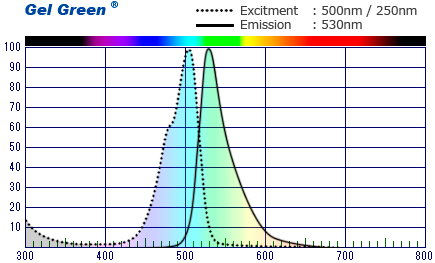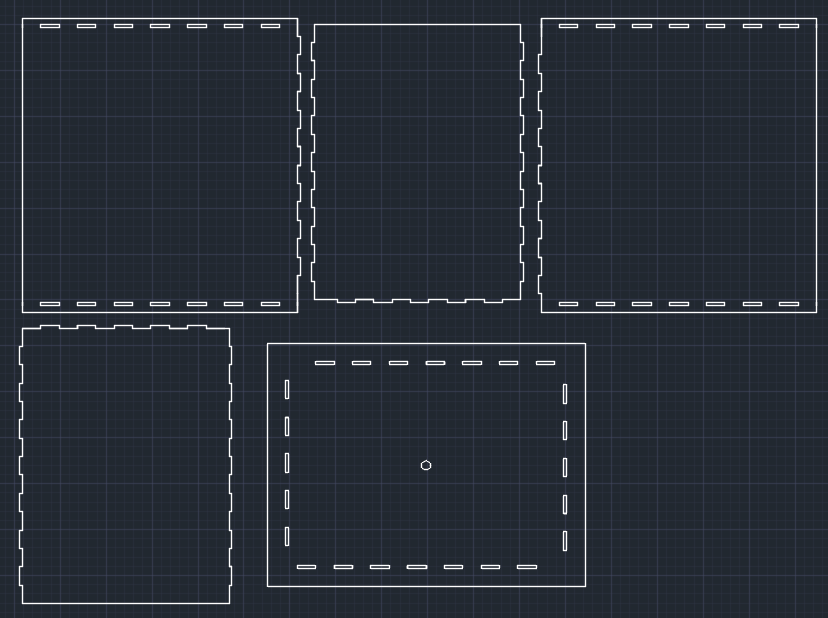The lab was looking for a simple non-UV gel doc system after we got the DNA electrophoresis setup. EmbiTec sells a cheap (~1K USD with camera, 600 without) gel doc system that lets one take images simply with a camera or even a mobile phone. Could I take the major themes from this product, and build one really quickly (and cheaply)?

It simply consists of a black plastic box that provides the necessary focal length for the camera to focus on the gel that is placed on a glass bottom that is illuminated with the necessary LEDs to excite the DNA dye. Optionally, an amber long pass filter can also be used to increase contrast.
I first made a box out of black poster sheets from thorlabs that was lying around in the lab by laser cutting. I definitely need to automate the process of making 3D objects by using slots in 2D sheet material. Maybe solidworks can help with this. Need to learn! Once assembled by aligning the slots with the holes, the edges were simply glue together to produce a reasonably strong and optically non-reflective box.
This box was sized to fit the 385 UV lamp that we currently have in the lab, but it was observed to be too strong when used with the gel. It’s too bad there isn’t any intensity control. Also, we needed a diffuser since the the LED’s in the lamp are large and discrete. When this didn’t work, I started thinking about using a tracing light box/surface as the light source. 
Taking it apart revealed a few interesting things and increased by already high mad respect for chinese engineering. The device simple consists of a row of white LED’s (with 68 ohm resistors) all connected in parallel to voltage rails. The voltage across these rails can be cycled through 2.6V, 3.3V and 4.4V by tapping on a capacitive switch (no BOM, all in PCB design itself!) connected to an 8 pin microcontroller. Would love to reverse engineer this when I have time. But going back to the original task at hand, I needed this box to now generate a diffuse uniform blue back-light.
Doing this called for a couple of modifications, the white LEDs in the PCB had to swapped out for specific LEDs that are capable of exciting gel green (the DNA dye). Gel green has an excitation peak at 500nm, and an emission peak at 530nm. Sadly, 500nm is right between blue and blue-green, so I couldn’t find an LED on digikey that had a coincident emission peak.

I settled for the SMLE13BC8TT86, which is an InGaN LED that emits at 470nm. It is available in an 0603 package, whose footprint is close to the footprint on the PCB of the tracing box. Assuming a forward voltage of 3V. Using the 68Ohm resistor at the high voltage rail setting gives an approximate forward current of 20mA (almost close to the peak applicable current). Increasing intensity would mean a decrease in size of the light box and a density increase.
An image of a gel frame with the dark box and the modified LED array looks like this

